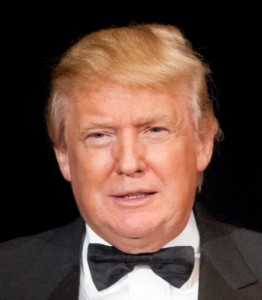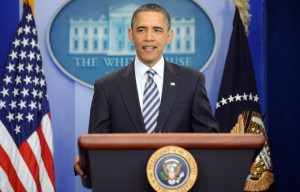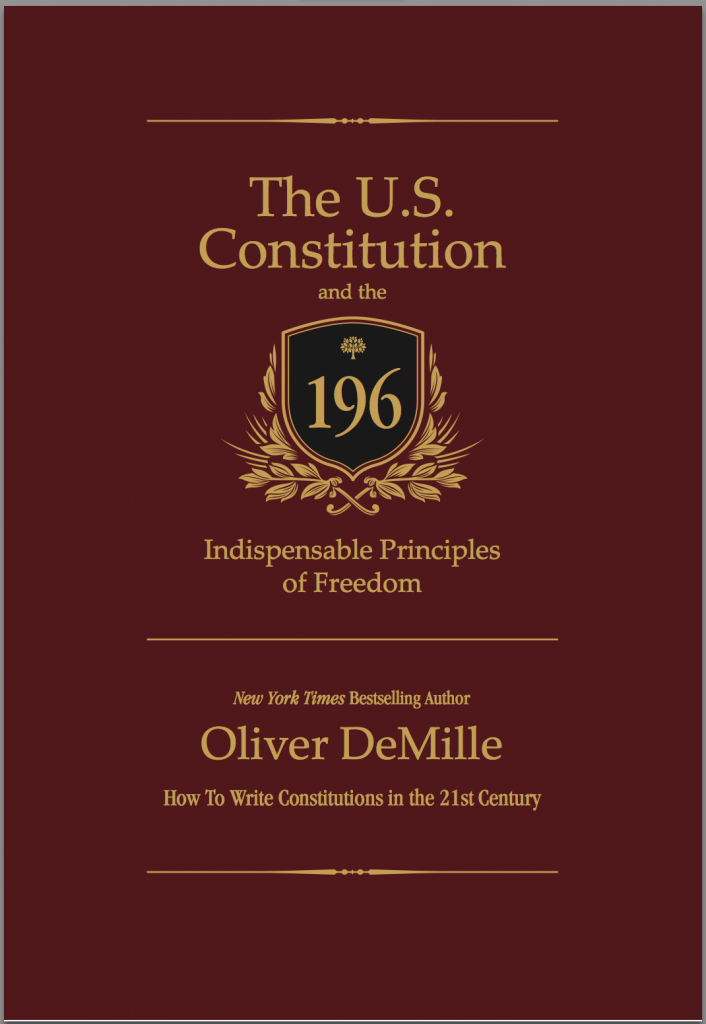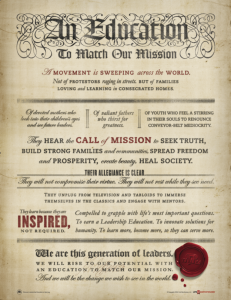America All Alone! by Oliver DeMille
February 19th, 2016 // 4:30 pm @ Oliver DeMille
A Big Picture Look at the World in Twenty Years
The Shift
 For more than a century America has enjoyed the luxury of strong allies in Europe. When problems came, as they always do, many European and North American nations relied on each other for strength, leadership, even rescue.
For more than a century America has enjoyed the luxury of strong allies in Europe. When problems came, as they always do, many European and North American nations relied on each other for strength, leadership, even rescue.
This was certainly the case in World Wars I and II and the Cold War from the 1960s thru the 1990s. Nobody alive today remembers a time when America was alone in the world.
Yet such a world is rapidly emerging. The main reason for this dangerous development is the massive and truly tragic decline of Europe. Most people don’t realize this is occurring, or just how significant it is.
A few pundits warn that this may be Europe’s last century as a great power—as leadership shifts from the Atlantic powers (Britain, France, Germany, Italy, the United States, Canada, etc.) to the Pacific Rim nations (China, Russia, India, North America). This shift is inherently problematic—the U.S. and Canada are trading European allies (nearly always friendly) for more belligerent and totalitarian foes in Moscow and Beijing.
Huge difference. And this will undoubtedly bring even greater difficulties whenever problems arise and help is needed. Russia and China each see themself as the top emerging superpower. India is a close third.
In times of trouble, where will America turn for support?
The truth is even worse than the pundits let on, however. The idea that this is Europe’s last great power century is overly optimistic. If current trends continue, no nation in Western Europe is likely to act as a major power after 2030. Certainly not beyond 2050, and possibly not even after 2020.
Downward Spiral
This will catalyze a tectonic shift in global affairs, and the ramifications of the change are already beginning.
But what exactly is happening in Europe to bring about such rapid decline? The answer is a warning to Americans, if we will heed it.
1) Terrorism
Terrorism has taken root in Europe. European nations are quickly becoming like Israel, Saudi Arabia, Yemen or other Near Eastern and North African states in terms of an underground but steady terrorist presence. This will only deepen and grow, unless something drastic occurs.
2) Refugees
The influx of refugees last year, this year, and likely for the next few years ahead will only exacerbate the incidence and proximity of terrorism. Certainly not all, or even most, of the refugees are terrorists. But a few are. That’s a major problem. The whole point of terrorism is that a very few can drastically impact the many.
3) Population Decline
Birthrates are rapidly changing the European electorate. Birthrates for traditional Europeans are down—in some cases negative—while birthrates for immigrants living in Europe are high. Democratic institutions are quickly changing as a result.
4) Debt
Debt is skyrocketing in the poor European nations, roughly two-thirds of the continent. The pattern of Greece is spreading.
5) Societal Decline
A general lack of innovation has settled over the continent. This is reinforced by a widespread and growing belief in high levels of government regulation in nearly every sector of society. Financial capital is moving elsewhere, increasing unemployment and further convincing voters to elect big-regulation candidates.
6) Leadership Gap
As a result of the fifth problem above, Europe is experiencing an era of lackluster leadership. Private sector leaders of all types are increasingly powerless in a big-government environment, and those in government were elected to regulate rather than lead. The bureaucracies are swelling (along with the costs), but strategic national thinking has become rare. This further fuels debt problems.
All of this was avoidable at one point, but we have long since passed the likelihood of any kind of serious turnaround. It now appears to be a downward spiral.
A New Path
Again, the United States and Canada aren’t far behind Europe in this pattern. Perhaps a decade, if the U.S. stays on its current path. Two decades at the most. But we still have time to reverse course.
Will we? The answer is very much in doubt.
In any case, Russia and China are attempting a major rise just as Europe is losing much of its vitality and strength. This puts North America in a tight spot.
If the U.S. needs strong, committed allies ten or twenty years from now, we may be out of luck.
Perhaps it is time for an entirely new strategic approach toward Mexico, Brazil, Argentina and the rest of Latin America. This may be source of future allies. It is certainly time—past time—for a serious return to the principles of freedom and free enterprise, along with a renewed adherence to the U.S. Constitution, in the United States.
At this point, the U.S. is charting a European-style course to join Britain, France, Germany, and Italy in their decline. President Obama has been an open proponent of a more Europeanized governance.
It goes without saying that this is a bad choice. Likewise, following the Chinese or Russian strategy is also the wrong approach.
It is time for America to chart its own direction, one based on a major refocus on freedom, free enterprise, and Constitutional values, as mentioned. Any other direction—any other direction —is a sure path to our decline.
Interested in Oliver’s works on freedom, forms and how to mend society?
Check these out:
 1913: The Year We Failed America…And How to Recover Her for Good
1913: The Year We Failed America…And How to Recover Her for Good- We Hold These Truths to be Self-Evident: 12 Natural Laws of Freedom, Progress and Success
- Freedom Matters: The Connection Between Career, Business and Freedom
- The U. S. Constitution and the 196 Indispensable Principles of Freedom: Writing Constitutions in the 21st Century
- The Freedom Bundle
Category : Aristocracy &Blog &Citizenship &Community &Constitution &Culture &Current Events &Economics &Featured &Foreign Affairs &Generations &Government &History &Leadership &Liberty &Politics
Trump vs Trump
January 26th, 2016 // 12:24 am @ Oliver DeMille
The Maybe
 A lot of people can’t stand the thought of Donald Trump for president. And, in contrast, a lot of people really like the idea. But neither of these groups, alone, is going to make the decision. Those who support Trump will vote for him, and those don’t, won’t.
A lot of people can’t stand the thought of Donald Trump for president. And, in contrast, a lot of people really like the idea. But neither of these groups, alone, is going to make the decision. Those who support Trump will vote for him, and those don’t, won’t.
There is another interesting group that will have a lot of influence in the primaries, and perhaps in the general election. This group (let’s call them Group X) isn’t sure what to do with this election. Perhaps Group X was summed up best by a man in Iowa who said something like this:
A lot of people don’t want to vote for Donald Trump, but they really do want to vote for someone like Donald Trump—someone with pretty much the same views, the same policies, the same disdain for Washington, the same sense of really fixing things, and the same aggressiveness, but without the outrageous, bombastic, offensive and extreme.
Group X could have a huge impact on the election. But if not Donald Trump, then who else could they elect?
What Voters Want
Some pundits immediately suggested that Ted Cruz or Chris Christie might meet their needs. But the Group X voters shook their heads. What the pundits don’t seem to understand is that many voters believe that if Christie, Rubio, Cruz, Bush, Fiorina, or Huckabee win the White House, it will be politics as usual in Washington. And the voters hate this.
Just think: Who will any of these candidates put into the top cabinet positions? Answer: politicians. The same old faces. Meaning that nothing will change.
But Trump: he’ll put in new people. From outside political circles. He’ll do things very differently. And that’s what voters want. This is what the Republican and media pundits don’t seem to grasp. The conservative voters want change. Real change. Not another George Bush I and George Bush II era.
The truth is, members of Group X want Trump, but they want him to be less…scary. To stop attacking war heroes, the disabled, and every minority in the nation and world. They want him to be politically incorrect, but not petty, vindictive and mean-spirited.
Moreover, as a nation we’re now moving into an era of war, whether we realize it or not. It’s a new kind of war, to be sure, with sleeper cells waiting in neighborhoods (like in San Bernandino) and lone extremist shooters (like in Philadelphia, Tennessee, and Fort Hood). But it’s real.
Group X voters want a wartime president, someone who says hard things and fixes heretofore unfixable problems. But they are torn, because they want the same president to do it all nicely. Many of these people have long felt that politics is too contentious and corrupt. They’ve spent years hoping for a new era, one that addresses the uncomfortable mire of American politics.
Now they are faced with just such a major shift, but it is headed in a very different direction. Putin is a wildcard and obvious danger, and China’s threat rests heavy on many Americans. Al-Qaeda, the Taliban, ISIS and other terrorists have many voters very concerned, and now the idea that radicalized terrorist attackers might be living in any neighborhood…it has a lot of people scared.
All this at a time that many Americans suffer a sort of collective PTSD about the Great Recession of 2008-2012. “When will the next major problems hit our economy?” many people wonder. Others ask, “Has the economy really, actually, recovered like Washington claims? Then why doesn’t it feel like it?”
The Trump Card
Many committed Trump supporters have long since moved past this internal struggle. In their minds, it is clear that Washington is a disaster, that both parties are unable to really put things in order, and that Trump is the most decidedly-non-politician in the race.
They don’t necessarily agree with everything he says about the border with Mexico, but they believe he’ll build a real wall and close the border if anyone can. In their view, none of the politicians will even get close.
Likewise, they don’t agree with Trump’s worst rhetoric against Syrian refugees, or other groups, but they’re convinced that he’ll make the nation a lot safer than anyone else who is running.
Apply this same approach to every issue—Russia, China, the economy. Trump supporters believe that if anyone can actually take on Putin, Iran, China, and change the economy, it’s Trump. In their view, everyone else in the presidential race will just dither around, play politics, talk a lot, and nothing will really change. In fact, things will just get worse over the next four years—just like the last eight, sixteen, or even twenty-four years have under Obama, Bush and Clinton.
And, of course, on the other side of the divide there are those who wouldn’t dream of voting for Trump. From their perspective, he’s unpredictable, divisive, and vindictive—unfit to be in the White House.
The challenge for Group X is that they partially agree with both sides. They struggle, because on the one hand they think that only Trump will really change things. Only Trump will actually fix these huge problems. They’ve just watched decades of politicians make promises, and nothing got done, or bad things got done. They know what another politician in the White House will do—and they don’t want that.
But on the other hand, they wonder if Trump will change it too much. Will his extreme rhetoric go too far? Hasn’t it already? Will rounding up illegal aliens in the U.S. go too far?
They like Trump when they think about him facing off with Putin, ISIS, China, North Korea, and Iran. He might be wild and unpredictable, but he’s OUR wild and unpredictable—so watch out! But they cringe when they picture how he might decide to respond to a big race riot in a major U.S. city. Or ten major U.S. cities.
The Real Race
This is the big debate in the 2016 election. For this group of conservatives (in Iowa, New Hampshire, South Carolina, Nevada, and a handful of other early voting states) who will probably determine how the primaries turn out, it’s not Trump vs. Cruz, Trump vs. Carson or Bush, Trump vs. Rubio or even Trump vs. Hillary Clinton or Bernie Sanders.
It’s Trump vs. Trump. Pure and simple.
Which way will these Group X voters turn? They are being pulled in two powerful directions, and the elections are rapidly approaching.
As the primaries arrive, we will see what they decide. They may pull back, deciding in the end that Trump is just too much of a wildcard, or they may decide that it’s finally time for a major shakeup in Washington, even a bumpy, white-knuckled one. After all, things have been going badly for over twenty-four years, so let’s try something different.
Trump supporters say that concerns about Trump are extreme, that the rhetoric of the campaign will eventually calm to the intelligent decisions of a President Trump—a proven leader and an effective, rational business executive, an inspiring and good father.
The X Group will consider this viewpoint as well. But it is still very unclear how they will vote. We will probably have to wait for the actual caucuses and primaries to see which direction they’ll choose.
Category : Blog &Citizenship &Community &Culture &Current Events &Economics &Foreign Affairs &Generations &Government &History &Independents &Leadership &Liberty &Politics
The Media is Wrong About America’s Election “Anger” Problem
January 20th, 2016 // 7:52 am @ Oliver DeMille
The New Myth
 Something significant has occurred during the 2015-2016 election cycle. The mainstream media has effectively portrayed “anger” or “being politically angry” as bad. “Good” citizens, in this context, are those who aren’t upset, frustrated, or angry about…well…anything.
Something significant has occurred during the 2015-2016 election cycle. The mainstream media has effectively portrayed “anger” or “being politically angry” as bad. “Good” citizens, in this context, are those who aren’t upset, frustrated, or angry about…well…anything.
Indeed, the media has created an interesting picture of what politics should be (in their opinion). This is multifaceted, but actually quite simple. With careful camera shots, and a clear agenda in the editing room, the media has portrayed two Americas–both of them far from accurate.
On the one hand, Donald Trump, Ted Cruz, Chris Christie, and Carly Fiorina have become the faces of American anger. When the media shows clips of these candidates, they are animated, usually upset about something, and speaking in strident tones with extreme words.
Their supporters are portrayed in nearly all of the video images as rowdy, unthinking, and a bit star-struck. The clips are carefully selected to show middle- and lower-class-looking Americans waving flags, wearing campaign t-shirts, and sporting sweats, jeans, un-manicured hair and waistlines that are larger-than-normal (at least on television).
In contrast, Bernie Sanders is portrayed as an apostle of decorum. Like other candidates, he waves his arms, speaks in extreme terms, and jabs his finger repeatedly at the crowd—but this is nearly always aired without actual audio. We often don’t hear what Sanders is saying; instead a reporter or commentator uses moderate tones while these pictures run in the background.
We are left with the soft, soothing and studied commentaries of professional journalists, while Sanders’ visual antics communicate energy, passion, and political strength. The juxtaposition of these cues and messages is subtle, but effective: “Sanders has great passion and momentum, and his ideas are credible and intelligent.”
Behind the Curtain
When we are allowed to actually hear Sanders speak, he is usually sitting in a one-on-one interview, conversational, and politely direct. No finger-jabbing, no waving arms. His hair may be a throwback to an episode of Back to the Future, but he looks confidently and humbly into the camera and speaks like an economics professor. “He is just the messenger. Hear his truth…”
Most clips of his audiences emphasize trim, handsome, young people (many of them students), often with jackets and ties. Indeed, they are exact replicas of Ron Paul crowds from past elections. The older participants mostly look like academics… Once again, the message is clear.
In contrast: When Trump or Cruz are interviewed in person, the cameras invade their personal space and close in on the face. Every “angry” wrinkle is visible. The camera backs off for Sanders and Clinton, showing the whole body—dressed for an episode of Mr. Smith Goes to Washington. The message is obvious: “This is a genuine man, or woman, of the people.” Clips of their intellectual discourses-of-the-day are played and replayed. As for Trump and Cruz, the sound bites are sensational and extreme.
But watch the full videos, where they are available. In reality, all four of these candidates have moments of extremism and other moments of intellectual depth. The same is true of Christie, Fiorina, Carson, and O’Malley, for that matter. Yet ask most TV viewers, and the word “intellectual” will apply to the Democratic candidates, while the Republican candidates are “extreme.”
A lot of artful and conscientious camerawork reinforces these stereotypes.
To be clear: Sanders’ stump speeches are every bit as “angry” as Trump’s. His rhetoric is patently extreme. “Wall street is ruining it for everyone else. Greed controls our nation. The 1 percent must pay their fair share, including free college for everyone. A much higher minimum wage is absolutely necessary—anyone who disagrees is part of the lies and greed.”
Likewise, Cruz is every bit as intellectual and studied as Hillary.
Anger Management
Perhaps the most interesting thing in all this: The typical ways the mainstream media portrays the Democrats are also applied to Marco Rubio. Not to Huckabee or Rand Paul. Not to Santorum or Kasich. Not to Christie or Carson. Just to Rubio.
The media has so far portrayed him as intellectual, credible, wise—like the Democratic candidates. Also, Rubio doesn’t wear the typical Republican uniform (suits and ties that scream “Mr. Smith Owns Washington.”). He frequently wears a sweater-like casual jacket with a zipper down the front. Very pedestrian. Very academic. Again, the mainstream media frequently portrays him like it does the Democratic candidates.
Fascinating.
[Why is that, do you suppose?]
By the way, the same thing occurred with John McCain during the 2007-2008 primaries. Later, once he was the nominee, the media shifted its approach and portrayed him the same way it had other Republican: extreme, out of touch, slick around the edges, uncaring, silver platter.
Romney didn’t get this stylized media treatment in 2012, and no other Republican is getting it now. Just McCain and Rubio. Interesting…
And, again, the real message of the 2016 election, if you accept the cues and innuendos of the mainstream media, is that:
- “Anger is bad!”
and
- “The Republicans are all angry.”
Let’s consider this idea seriously. If anger is bad for politics, then we must of course be happy with everything President Obama has done. “No anger. Just smile. It’s all good.”
Steps to Solutions
The problem is that it isn’t all good. In his last State of the Union address, the President painted a rosy picture of a more prosperous and safer American than when he took office. Both are false. The national debt has ballooned from $10 trillion when he entered the White House to $19 trillion today. ISIS is a real threat, along with Al-Qaeda, the Taliban, other terrorists, North Korea, Iran (much worse than before), China, Russia…etc. We aren’t a bit safer.
There is much to be concerned about—very concerned. Calling such concern “anger” and equating it with being unintelligent or uninformed is, in fact, totally out of touch. It’s also ignorant. False. And insulting.
The economy is still facing serious problems, and the last seven years have only made things worse. Are many voters “angry?” Yes, in both parties. And with good reason.
A smug, arrogant media isn’t helping. Let’s be honest. The mainstream media are at least as responsible for today’s widespread American “anger” as the White House.
Anger isn’t the ultimate solution, to be sure. But it actually is a reasonable first step. Or, perhaps, the second step, after first recognizing that something has gone wrong. There’s a lot to be angry about, and only people who aren’t paying attention—or actually like the status quo—feel great about the country’s current path.
Determination and Change
Being angry about the bad directions Washington is taking doesn’t mean voters are unintelligent, uninformed, or unsophisticated. It means they care. It means they’re watching, and they expect Washington to do its job—a lot better than it has recently.
It means they’re still part of a democratic republic and they still believe democracy works. They take their citizenship seriously, and they’re gearing up to take action on election night.
The truth is that this is what scares the mainstream media. They label it “angry” because they don’t want to admit that the majority of voters disagree with the elite media and want a lot more government “of the people, by the people, and for the people.”
If you’re an elitist, freedom scares you. So you call it names, like “angry” or “uninformed.” In truth, it is angry, but it’s actually very well informed. It’s the power of the people focused on an election with an intensity not seen in a lot of years.
The people want real change, like they did in 2010 and 2014. And they’re determined to make it happen. But this time, their intensity is pointed at a presidential election.
The mainstream media knows what’s coming, but they’re going to try to stop it if they can. This approach will make a lot of voters even angrier—and even more determined.
**************************************
Click on a title for offer details:
Homeschooling for Dads Bundle $45 – just $18 with coupon DADSROCK-15
How to Mentor 7-Week Course
(name your price! Really!)
The U.S. Constitution and the 196 Indispensable Principles of Freedom DEEP DISCOUNT!
The Leadership Education Manifesto DEEP DISCOUNT!
The Freedom Bundle
DEEP DISCOUNT!
Category : Blog &Citizenship &Community &Culture &Current Events &Education &Featured &Generations &Government &History &Independents &Information Age &Leadership &Liberty &Politics
A Real State of the Union
January 7th, 2016 // 9:09 am @ Oliver DeMille
Where America Is Right Now
Whatever the President says in the State of the Union address early next week, here’s what really needs to be said.
A Real State of the Union:
 Sometimes things just don’t add up. They don’t make sense. There’s no way to reconcile them with…well, reality. They are square pegs in a world of round holes.
Sometimes things just don’t add up. They don’t make sense. There’s no way to reconcile them with…well, reality. They are square pegs in a world of round holes.
I recently came across five such troubling facts and questions in current events, and, to make them even more ridiculous, they’re all coming from basically the same place: The current White House.
So here they are. I’ll give a little commentary on them, but not much. They’re pretty self-explanatory. Or, maybe a better way to say this is that they’re all amazingly ridiculous and commentary won’t help.
1. According to the bipartisan Congressional Budget Office, Obamacare (the Affordable Health Care Act) will reduce the number of full-time workers in the U.S. by 2 million over the next ten years.
Seriously?
Yes.
Just think of it: That’s 2 million full-time jobs that are going to be lost simply (and specifically) because of Obamacare.
This begs the question: “Then why do we keep it?”
The next three items come from an unattributed note circulating on social media. I think they’re worth reading:
2. “We are advised to NOT judge all Muslims by the actions of a few lunatics, but we are encouraged to judge ALL gun owners by the actions of few lunatics.”
The White House couldn’t be more inconsistent on these two issues.
(By the way, I side with not judging any group by the actions a few bad apples.)
3. “Why are we cutting benefits for our veterans, no pay raises for our military and reducing the size of our army (too expensive to maintain), but we are not stopping payments or benefits to illegal aliens, or cutting federal aid to foreign countries?”
Cut the foreign aid and massive welfare (across the board, not just to immigrants) and rebuild our security.
4. “Seems we constantly hear about how Social Security is going to run out of money. But we never hear about welfare or food stamps running out of money? What’s interesting is the first group ‘worked for’ their money, but the second didn’t.”
Did government use the money paid for the first group to cover the second?
The last one is just plain jaw dropping:
5. Over the course of many months our President and the White House have repeatedly assured us of two things: (A) ISIS, Al-Qaeda, and Islamic terrorists aren’t much of a threat, and (B) the most pressing priority for our national security is to get more nations to sign environmental treaties.
Talk about fiddling while Rome burns…
The Real Concerns
Together these five amazing attitudes give us a pretty good indication of how our current national leadership is thinking.
What about terrorism? What about the struggling economy? What about the massive over-regulation of business? What about the huge amounts of capital and jobs that are fleeing to other nations? What about serious unemployment (hidden because of the way Washington calculates its statistics)? What about China, Iran, and Putin? What about North Korea, and Syria? What about our skyrocketing national debt? What about…
“Don’t worry,” we’re told. “It’s under control.”
Really?
Where?
Certainly not here in the real world. The truth is that these things are far from “under control.”
I’m an optimist, and I still believe that America’s best years are ahead. But we need to make some major changes—and fast.
Category : Blog &Citizenship &Community &Constitution &Culture &Current Events &Featured &Foreign Affairs &Generations &Government &History &Independents &Leadership &Liberty &Politics
Comparing Tax Plans from Presidential Candidates
December 8th, 2015 // 7:51 am @ Oliver DeMille
Need to Know
 This is going to be a bit wonky. Comparing tax plans of various candidates isn’t something most people do just for fun. But it’s important because a candidate’s tax plan says a lot about how the person is picturing himself/herself in the White House, and how he/she approaches fiscal and economic issues.
This is going to be a bit wonky. Comparing tax plans of various candidates isn’t something most people do just for fun. But it’s important because a candidate’s tax plan says a lot about how the person is picturing himself/herself in the White House, and how he/she approaches fiscal and economic issues.
This is vital knowledge for voters. Next to how the next president will deal with national security, knowing how he’ll approach finances is the most important thing voters can know.
The top proposals can be separated into three main categories: Little Changes, Big Changes, and Major Changes.
Little Changes
Jeb Bush
Bush promotes at least two very good ideas in his tax plan:
- Repeal Obamacare and replace it with an expanded Health Insurance Account and insurance market where policy rates stop skyrocketing, and policies are portable across state lines (further decreasing rates over time).
- Provide tax credits to people without employer-provided insurance coverage.
Bush’s plan cuts taxes from the current top rate of 39.6% down to a top rate of 28%, and a corporate rate of 20%. This is a little change, an improvement. But consider the other plans below.
Big Changes
Marco Rubio
Rubio released a plan that is similar to the Bush plan in many ways, including repealing and replacing Obamacare (like nearly all the other plans), with the top tax rate cut from 39.6% down to 35%, and the corporate rate down to 25%. Rubio promotes a number of cuts to government programs and closed tax loopholes, with an overall cut of around $11.6 trillion of taxes over time.
Rubio’s rates are higher than Bush’s, but he actually makes a bigger total cut to taxes because he provides fewer loopholes. Rubio’s plan gives a huge boost to low income families, as does Cruz, and also Trump (Trump proposes a zero tax rate for couples making up to $50,000.)
Rand Paul
Paul, as you might expect, proposes a 14.5% flat tax for everyone. The idea is to expand the tax base, while lowering all rates in ways that will stimulate business, jobs, and more capital flowing into the United States. This model also stimulates increased freedom and entrepreneurship by simplifying the tax code and collections process. Paul also wants to significantly reduce the size and cost of government.
Ben Carson
Carson provides another alternative for significant change, promoting a 15% flat tax (he wanted 10%, but decided that 15% was needed). This is similar to Paul’s proposed tax rate, but it is unclear what Carson would cut in order to balance the budget. Carson doesn’t want to outline a full plan right now, preferring to wait until elected and negotiate the costs of government down in real time. This leaves his specifics a bit hazy, but his principles on taxation are clear: lower taxes, and reduce the size of government.
Ted Cruz
Cruz proposes a 10% flat tax for individuals income, and a 16% tax business flat rate, which will most likely be a VAT (value-added tax), meaning that businesses will pass it on. This will drastically improve business investment, jobs, and economic stimulus in the U.S. economy—but it also increases consumer prices across the board. Of course, like the other plans, Cruz includes repealing Obamacare, cutting certain loopholes, and aggressively scaling back the size of the U.S. government. The Cruz plan has been criticized because it gives a major tax break to upper income families, but it is second only to Rubio’s plan in giving tax relief to the bottom 10% of households.
Major Changes
Donald Trump
Trump released a plan that includes:
- A simplification of the tax code (from seven tax rates to three, and all of them at lower rates). Compared to the flat tax, this plan ensures that high income businesses and people will pay at higher rates than the working class—but pay less than they would in other advanced nations (and less than they were under President Obama). This incentivizes major money flow to the U.S. economy, businesses, and jobs.
- A significant reduction of taxes for most Americans. For example, Trump’s plan provides a zero tax rate for a person making up to $25,000 a year (or $50,000 per year for a couple). It brings the highest earner rate of 39.6% down to 25% for a person earning over $150,000 ($300,000 for a married couple), and brings similar cut for households earning between $50,000 and $300,000 a year. This is an immediate raise and economic boost for most American workers, families, and businesses.
- An elimination of the estate tax and the marriage penalty, providing a huge financial benefit to families and small businesses.
- A reduction of corporate tax rates (from 35% down to 15%) to below those of China and other major economic competitors. This is long overdue, and like the Paul, Carson, or Cruz plans, would bring a lot of businesses (and jobs) to the U.S., and boost the American economy.
- A one-time, low-rate repatriation plan that encourages companies to bring their trillions of dollars held in foreign banks back to the U.S. economy (and keep these funds here long term). Again, this will spur a major jobs and investment increase in our economy.
- Overall tax cuts of close to $12 trillion over time. (By comparison, the Bush and Cruz plans each cut approximately $3.7 trillion over time.)
- Trump’s plan gives by far the biggest tax relief to the middle class (while Rubio helps the bottom 10% the most, and Cruz’s plan is best for the very top earners).
Carly Fiorina
Fiorina takes an even stronger approach to changing tax policy than Trump, Cruz, Carson, or Paul. She proposes a 3-page tax plan, and an overhaul of the way the government budgets, not just what rates of taxes are applied. Under her plan, every government agency and program would start at a budget of $0, and would be required to make the case for how good their programs are, how well they work, and how much money they need to keep flourishing—or improve.
Based on an outline of all such government programs, the administration would decide to keep or cut any agency or other government program, and to fund it only to the extent that it is worth the cost—when compared with all other government operations and the real needs of the nation.
Once such a budget is outlined, the tax needs and rates would be determined. This would very quickly balance the budget, Fiorina proposes, and immediately cut or downsize government programs that aren’t needed or simply aren’t working.
The Roadblock
Whatever candidate(s) you like, or don’t like, this quick overview can help us get a sense for what kind of fiscal leader the candidate might be.
Note that all of them, even the Bush plan, are significantly better than the Clinton or Sanders plans (which raise taxes and add numerous government programs). At least the leading Republican candidates seek tax reductions and the downsizing of Washington–some more than others.
Regardless of who replaces Barack Obama in the White House, some of the key points in the Trump, Cruz, and Fiorina tax plans are downright excellent. The United States needs them, and the sooner, the better. Ideas from the Bush, Rubio, Paul, and Carson plans also have merit. Some of the plans from other candidates have important policy ideas as well (research, for example, the balanced budget plan by John Kasich).
Whoever we elect in 2016 should promote the best parts of these plans and help rekindle our struggling economy.
But this brings us to a significant roadblock. No matter what tax and budget plan the next president wants to follow, the White House will have to get it through Congress. On the one hand, Congress is accustomed to budgeting a certain way and is often resistant to major new ways of doing things—regardless of what candidates promised during their campaign. On the other hand, the right kind of executive leadership could certainly make a difference in getting Congress to act.
Consider Fiorina’s proposal to give the president power to move money around to different agencies and programs—taking from those that aren’t working or aren’t really needed, and giving those funds to programs that are very effective and highly important. In many ways, this is an excellent idea.
But it has one major flaw: every time a new party enters the White House, the president could just shift a ton of money from, say, the military to environmental programs, etc.
This is a significant downgrade of the Constitutional format. On the other hand, if we combine Fiorina’s zero-budgeting program where each agency starts from zero and the president proposes major cuts, and then Congress does its own zero-based budgeting, it’s a real winner. We need this. But we need it in the Constitutional way (which seems to be what Fiorina is proposing, after all).
Ultimately, none of these plans are going to sail through Congress unscathed. Nor should they. The Constitution works, when we follow it. Checks and balances are a good thing. (Note that other plans beyond taxes, like Trump’s promise to deport all illegal aliens, would undoubtedly face serious blocks in the courts.)
But the candidates’ tax plans do give us some excellent ideas on how to slow and stop Washington’s overreach. The next president should study them and adopt a number of things contained in these plans—the best of each.
Correction, 12/12/15: A previous version of this article stated that Ted Cruz’s tax plan included a 16% sales tax. This language has been clarified to read: “… a 16% tax business flat rate, which will most likely be a VAT (value-added tax), meaning that businesses will pass it on.” Thanks to the couple of readers who questioned this detail so I could revise for accuracy.
Category : Aristocracy &Blog &Citizenship &Community &Culture &Current Events &Featured &Government &Leadership &Liberty &Politics

















